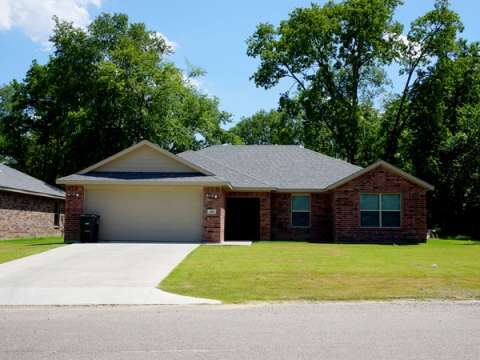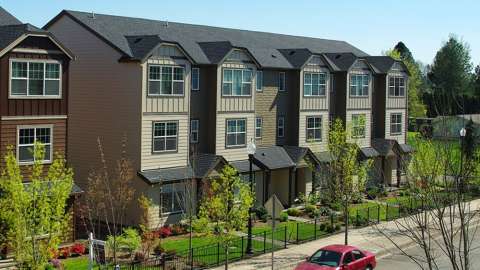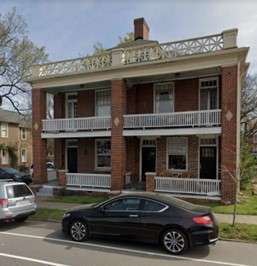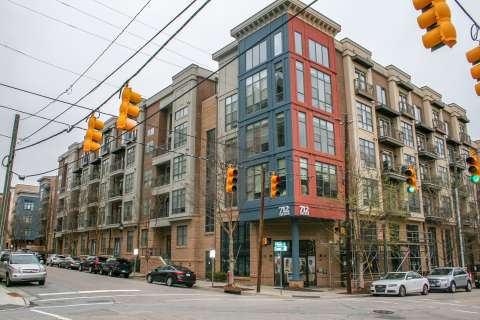Jump To:
Housing Types and Energy Use
When we think of means of reducing greenhouse gas (GHG) emissions, we often think first about solar panels or electric vehicles. These are important parts of meeting the City’s climate goals. However, another solution that cities can directly control is sometimes overlooked – the energy use of different housing types.
Not all housing types are equal in terms of energy efficiency. The Department of Energy publishes statistics that show large differences in energy use, which translates directly into GHG emissions.
Simply put, detached houses use the most energy. Townhouses use significantly less, and apartments use much less. Each home in an apartment uses about half of the energy of each detached house. This is because townhouses and apartments share walls and/or ceilings, which reduces heat or cooling loss to the outside. They also are smaller on average, meaning less space to heat or cool.
Detached Houses
Detached houses, often called single-family houses, are a popular housing type. On average, they consume more energy than other housing types, although that varies by the size and age of the structures. Each detached house uses 82.7 million BTU (British Thermal Units, which is how the U.S. Department of Energy reports the data) annually on average.
Townhouses
Townhouses, sometimes called single family attached houses, are a popular housing type for people looking to downsize or do not want to maintain a large yard. They use less energy than detached houses because they share walls and are typically smaller. According to the Department of Energy, each townhome uses 56.5 million BTU annually on average.
Small Apartments
Small apartments refer to 3- or 4-unit buildings, which are common in Raleigh's older neighborhoods. Each home in a small apartment uses 42.1 million BTU annually on average.
Apartments
Apartment homes are a popular choice for people who do not want a yard or are looking for a more walkable neighborhood. They are less expensive on average than the other housing types. They also use less energy, because they share walls and ceilings and are smaller than the other types. Each home in an apartment uses 34.0 million BTU annually on average.
Takeaways
This means that in a growing city, a simple approach to reducing per-person GHG emissions is to allow a wider range of housing types in more places. For places where apartments are already allowed, reconsidering height restrictions that limit the number of units is a similar strategy.
These changes also create other benefits. Detached houses are the least affordable housing type. Allowing more homes in the form of other housing types making housing more affordable for households at a range of income levels. According to data from Redfin, the median price for detached houses was $418,000 in early 2024. The median for townhouses was $358,000, and for apartment/condo homes was $339,000.
Allowing a greater variety of housing types provides options in the same neighborhood for people at various stages of life. Both younger and older residents may prefer to not have to keep up a lawn or larger home, for instance. If choices aren’t available nearby, however, many residents must move or live alone in a house that is hard for them to maintain. Lawn maintenance itself also can have a significant environmental impact, as fertilizer and weedkillers can harm water quality.
Lastly, allowing more housing density supports walkability and neighborhood-serving businesses such as restaurants and coffee shops. This also reduces GHG emissions by making walking trips more possible.





